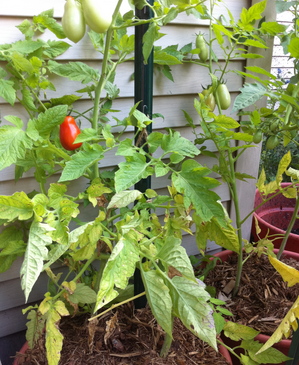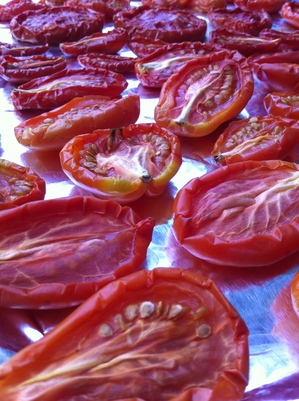A locavore discussion: why preserve tomatoes for the winter?
/
I have been scratching my head recently over a recent Op-Ed piece in the New York Times, called Math Lessons for Locavores, by Stephen Budiansky. First, I felt kinship with the author when he agreed with what I learned when I did my organic berry jam cost comparison article - namely, the efficiencies involved in shipping food long distances, “adds next to nothing to the total energy bill." Then, he goes on to posit that household energy usage is the true culprit, accounting for “32 percent of all energy use in our food system, the largest component by far."
The Op-Ed piece concludes with the same argument I learned from economics in high school; we should “grow lettuce, oranges, wheat, peppers, bananas, whatever, in the places where they grow best and with the most efficient technologies – and then pay the relatively tiny energy cost to get them to market, as we do with every other commodity in the economy." This is his rationale for being wary of the terms “food-miles" and “sustainability" - which are rapidly joining “organic", “natural", and “free-range" as words that connote gold and denote tin.
He gives very convincing evidence that the energy used in transporting grapes from Chile can be less than the energy used for the extra freezer your family buys to freeze your local rhubarb. But his fallacy is assuming that we need, as a nation of Americans, to be eating those grapes in March.
For the last three weeks, at the Westside Farmers' Market, I have overheard customers ask the vendors whether or not they have any lettuce to sell. I think this is because tomatoes are ripe. At some point in our national assumptions, a burger became married to “lettuce and tomato." The question, “would you like lettuce and tomato on that?” became coupled together and ingrained into our national consciousness. Therefore, when you go to the farmers market and see tomatoes, our brains look for the lettuce - “it must be here! How can I make a proper burger without it?" But the two vegetables are not ripe at the same time: lettuce typically arrives in the spring and tomatoes in the fall.

Bananas on our breakfast cereal, apple pie in May, watermelon for the 4th of July picnic, orange juice and coffee in the mornings, chocolate for Valentines Day, lettuce with tomatoes for BLTs in March ~ many food pairings in our American culture assume cheap oil, willing trading partners, and organized large-scale transportation.
Our supermarkets groan under the volume and the diversity of our food choices - during all seasons of the year. That abundance of choice and quantity is not serving us. According to a recent article in Scientific American, Americans throw away between 25% and 50% of all of the food we produce for domestic sale and consumption. A 2009 study from the National Institute of Health concluded, "US per capita food waste has progressively increased by ~50% since 1974 reaching more than 1400 kcal per person per day or 150 trillion kcal per year. Food waste now accounts for more than one quarter of the total freshwater consumption and ~300 million barrels of oil per year."
You only throw away that which you do not value. The NIH study tells us that Americans are a spoiled nation when it comes to food. There are 6.8 billion people in the world - 1.02 billion of them are hungry.
One out of six people is hungry, yet we are overwhelmed with a relentless supply of bananas and lettuce and avocados and apples all seasons of the year. It is understandable that our national barometer for what to expect at the market has been skewed. It is understandable, and a huge tragedy, that we throw so much food away.
Why preserve tomatoes for the winter? I preserve my tomatoes for the winter to help me reset my internal barometer as for what I should expect on my burger.
Here is the article on annarbor.com.




